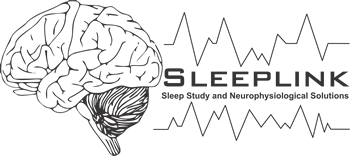Sleep is very important for our physical and mental wellbeing.
Sleeping is not only there for our bodies to rest, recharge, and recover from one day to the next.
Good quality sleep is necessary for a wide range of health reasons, including optimal cardiovascular health, storing of memories, and to produce or regulate various hormones. Below you can find some information about the most common sleep disorders.
The information provided here is mostly in non-medical terms. Should you be in need of more scientific information, please feel free to contact us at any time.
SLEEP APNEA SIMPLY MEANS THAT ONE STOPS BREATHING WHILE ASLEEP
What Is Sleep Apnea?
What Is Sleep Apnea?
It might sound scary, but it is in fact a very common problem that is estimated to affect about 22 % of South Africans. During sleep, our bodies lose muscle tone and become floppy. This is a normal occurrence, but in some people it causes the repeated collapse of their airway, and subsequently breathing disruptions for periods of ten seconds to two minutes, or even longer.
DEPENDING ON THE OUTCOME OF YOUR TEST RESULTS, YOU MAY REQUIRE TREATMENT FOR SLEEP APNEA
How Is Sleep Apnea Treated?
How Is Sleep Apnea Treated?
Different treatment routes are possible depending on the type and severity of sleep apnea, ranging from weight loss, positional therapy, mouth pieces, or CPAP therapy, to surgery. Most commonly, sleep apnea can be treated very efficiently with Continuous Positive Airway Pressure or CPAP therapy. This is a small bedside device that delivers a constant column of air to the person, through a mask that fits over the nose. This keeps the airway open while you sleep to prevent sleep apnea while at the same time eliminating snoring.
Periodic Limb Movements of Sleep
Periodic Limb Movements of Sleep
Periodic Limb Movement Disorder (PLMD) is a sleep disorder associated with repetitive, involuntary, small movements of the limbs. These usually occur in the legs, with brief jerking, twitching or upward flexion of the foot, but occasionally it could include the arms or shoulders. PLMD is generally worse in the first half of the night and may cause a person either to lie awake and unable to fall asleep, or it could wake a person up out of their sleep repeatedly. If enough of these movements occur, the resulting sleep deprivation may cause similar symptoms to that of sleep apnea, of which the most prominent is excessive daytime tiredness.
Narcolepsy is rare type of sleep disorder
Narcolepsy
Narcolepsy
Characterized by sudden and involuntary sleep attacks in daytime, narcolepsy is caused by the inability of the brain to produce a certain chemical, or neurotransmitter called orexin, that is necessary to regulate the wake-sleep cycle. Therefore, narcolepsy makes it difficult to stay awake for long periods of time, regardless of circumstances.
Various treatments
Various treatments
Treatment varies depending on the severity of the symptoms, but may include lifestyle changes, medication, or a combination of both.
For more information on Narcolepsy or to book an appointment, please contact us.
A common sleep disorder
Insomnia
Insomnia
Insomnia is a common sleep disorder that affects about 10% of the population. Insomnia is characterized by daytime fatigue caused by difficulty falling asleep at night, by frequent awakenings at night, or by waking up earlier than desired with the inability to go back to sleep again.



